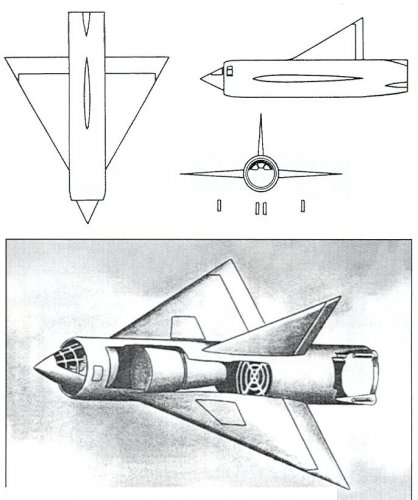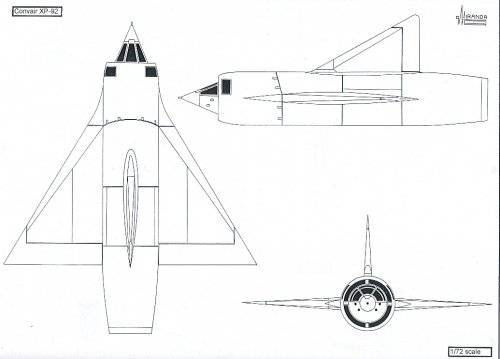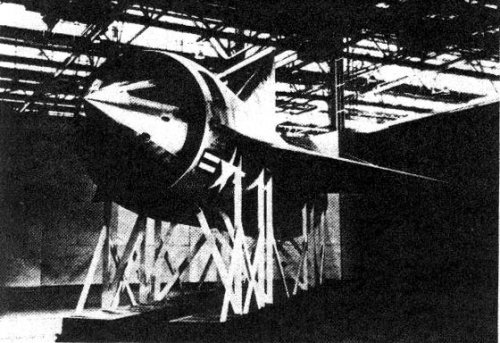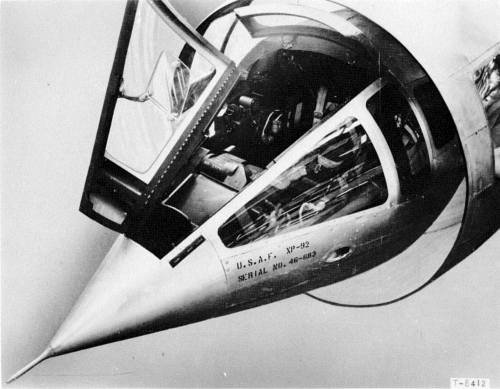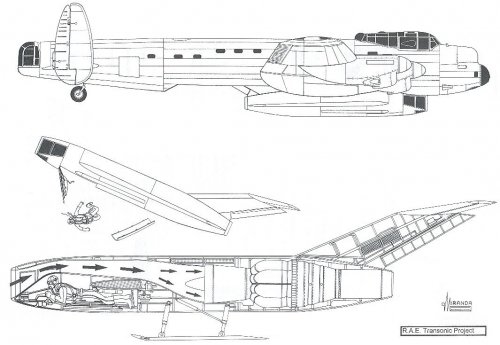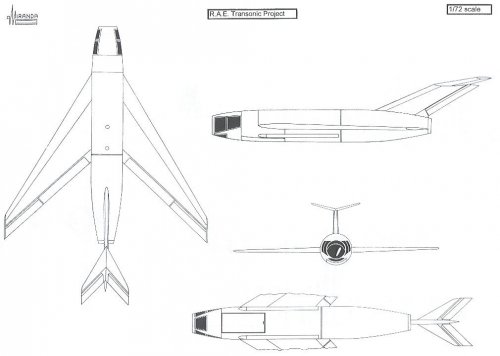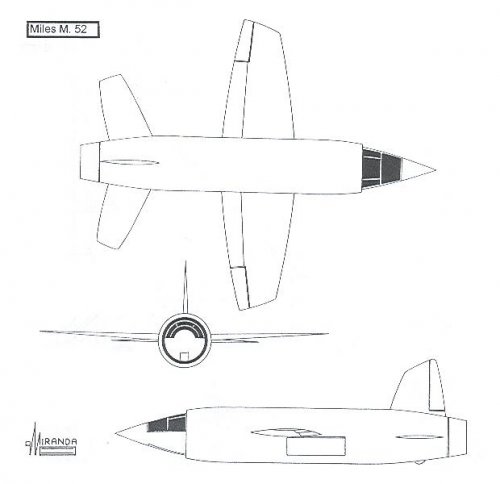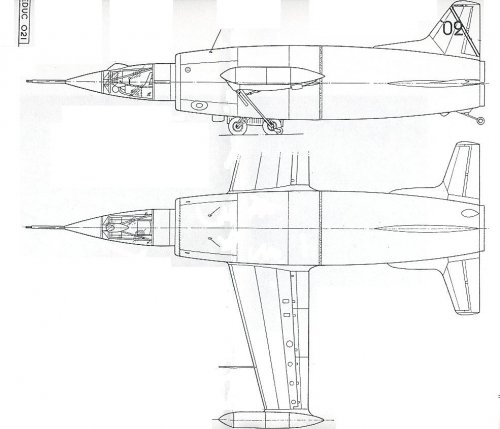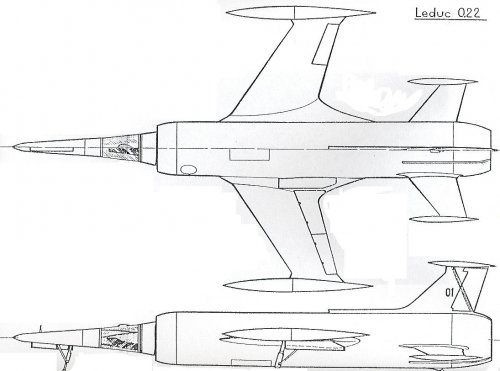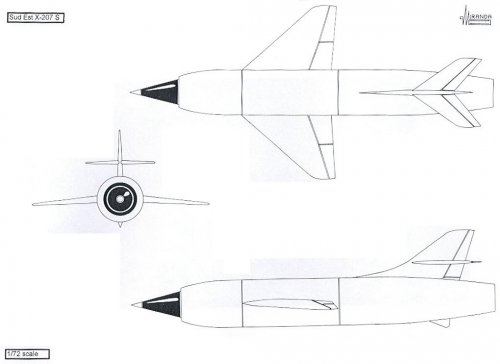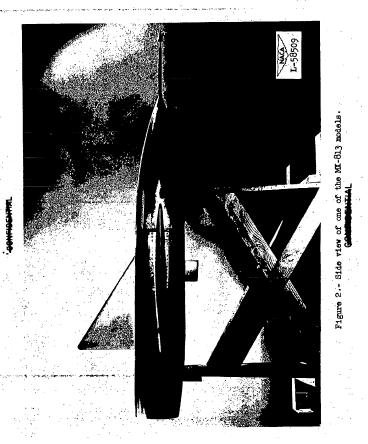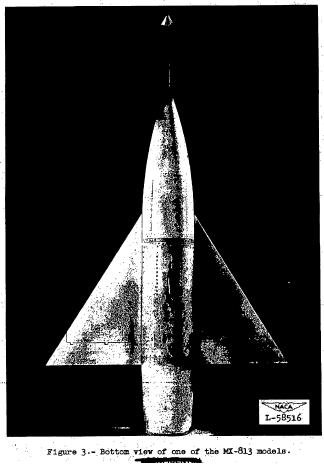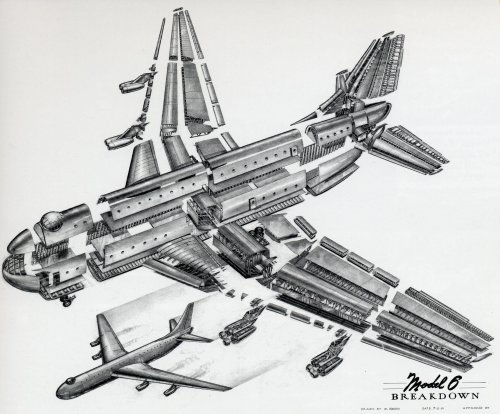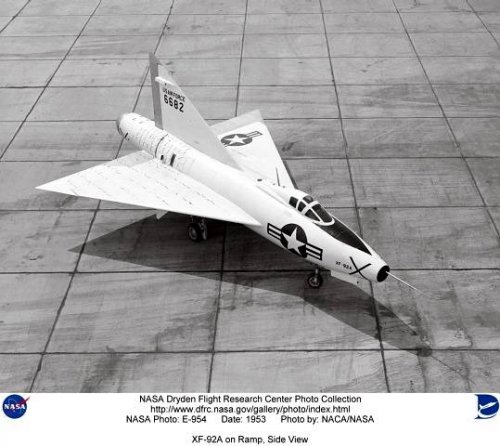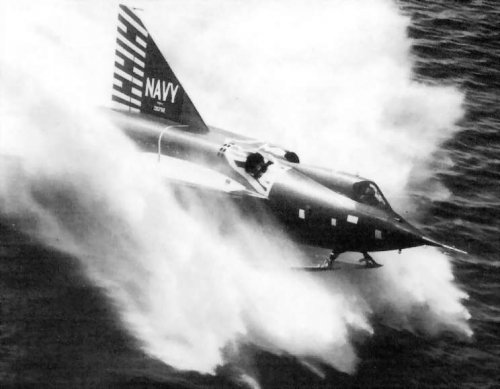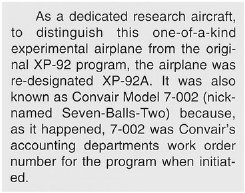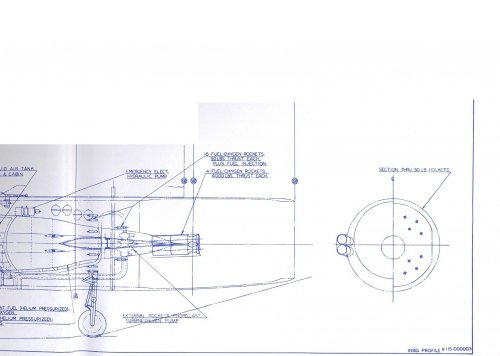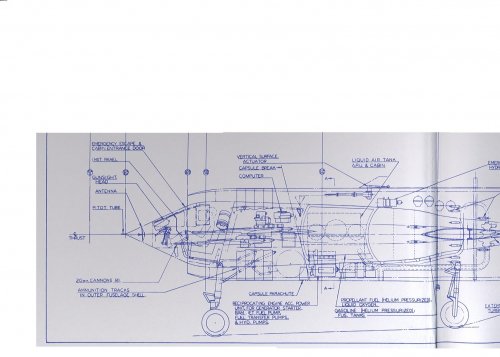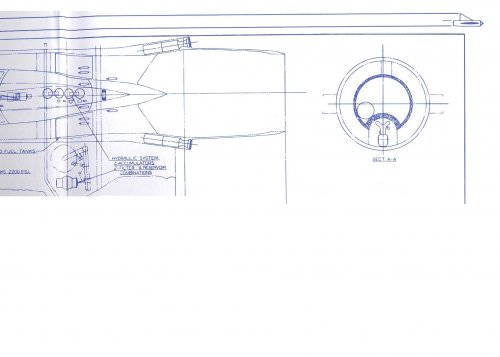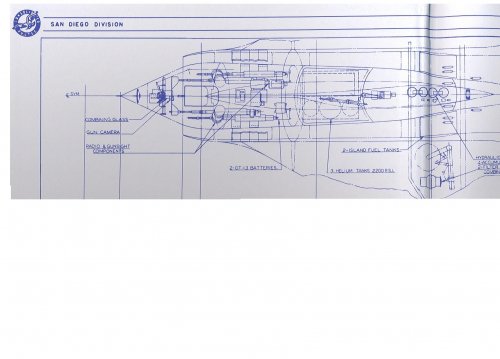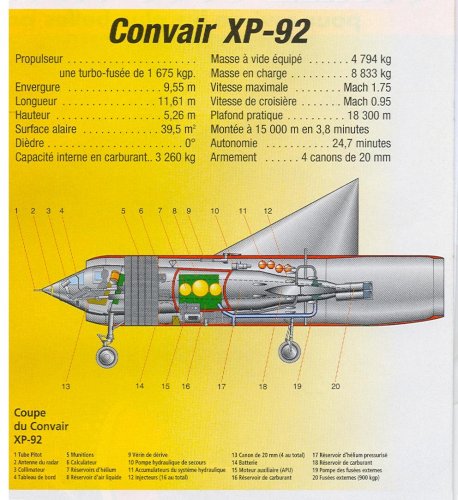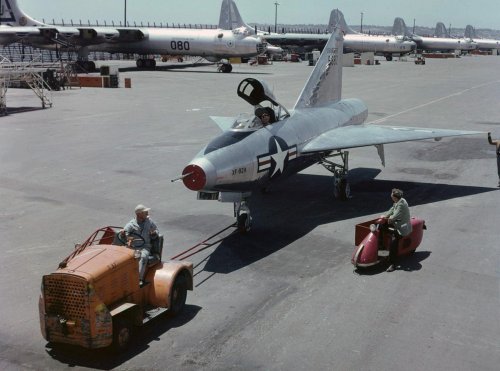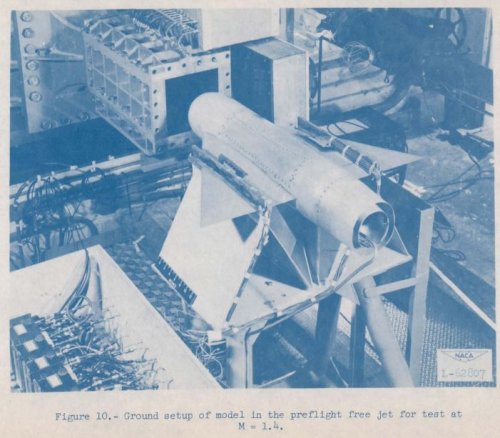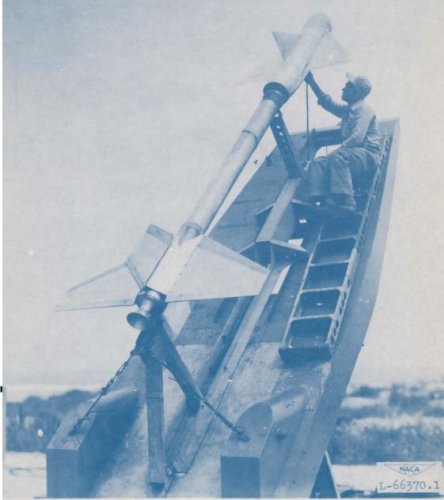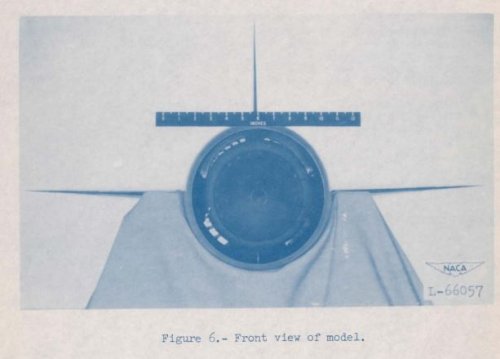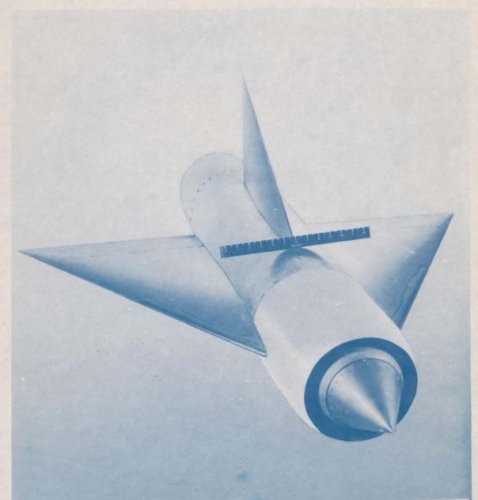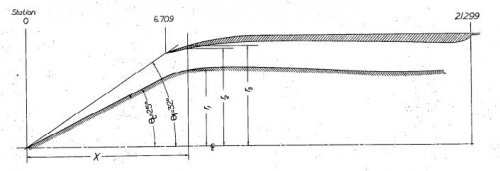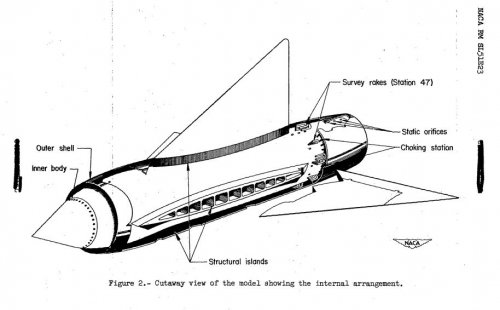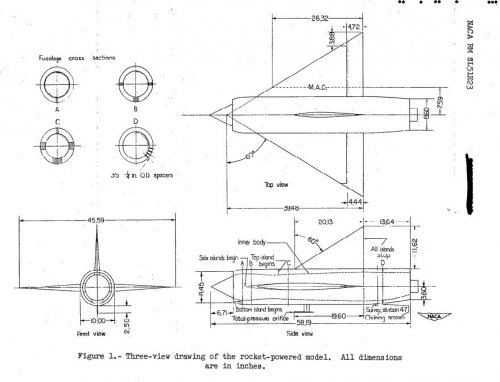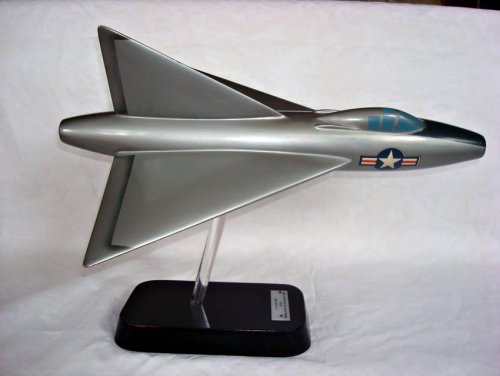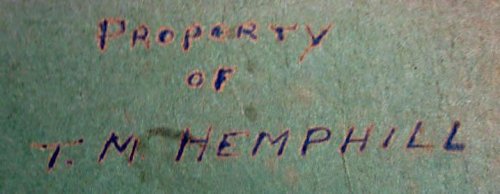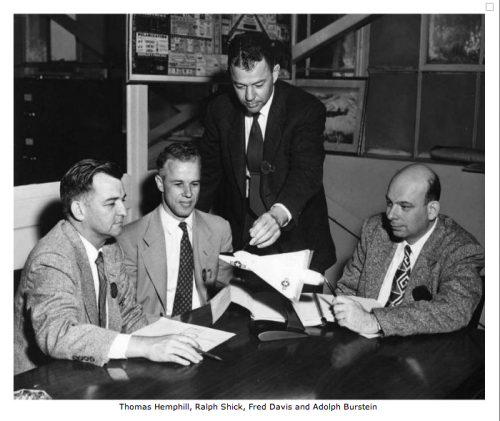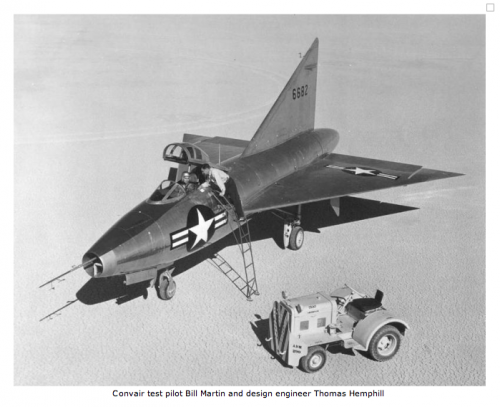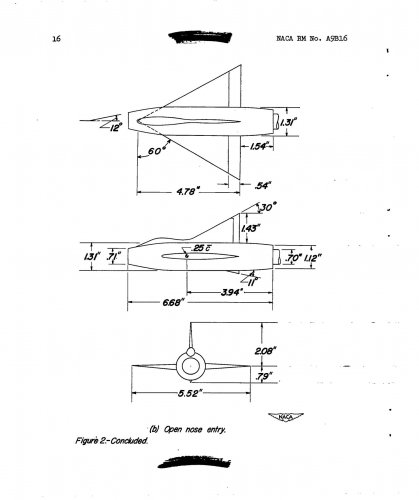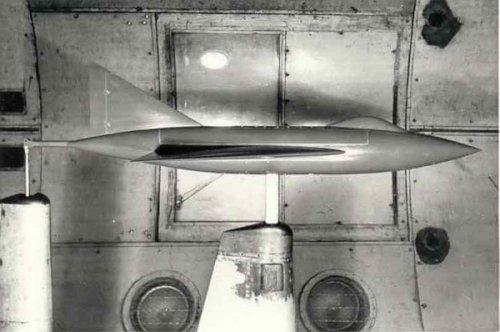You are using an out of date browser. It may not display this or other websites correctly.
You should upgrade or use an alternative browser.
You should upgrade or use an alternative browser.
Convair XP-92 / XF-92 - Projects and Development
- Thread starter Justo Miranda
- Start date
-
- Tags
- air defence air defense command cold war consolidated vultee consolidated vultee aircraft corporation continental air forces convair interceptor interceptors late 1940s national advisory committee for aeronautics point-defense interceptor post-world war ii united states air force united states army air forces world war ii
- Joined
- 13 August 2007
- Messages
- 8,478
- Reaction score
- 11,128
lucky for Convair is was cancelled
because the Design is without area-rule design !
mean only Subsonic speed
see the disaster of Convair F-102 Prototype
a supersonic Fighter, how flow only subsonic
because Design without area-rule design
because the Design is without area-rule design !
mean only Subsonic speed
see the disaster of Convair F-102 Prototype
a supersonic Fighter, how flow only subsonic
because Design without area-rule design
archipeppe
ACCESS: Top Secret
- Joined
- 18 October 2007
- Messages
- 2,436
- Reaction score
- 3,170
I've always wondered how the pilot can get into the fighter..... ???
archipeppe said:I've always wondered how the pilot can get into the fighter..... ???
Through the hatch.
Attachments
archipeppe said:I've always wondered how the pilot can get into the fighter..... ???
All projects of this type had the same problem.
In France the Leduc 010-01 had a circular hatch (Yeager style) in the starboard fuselage.
The Leduc 021 & 022 and the Sud Est X-207S used the DFS system in which the windshield was moved forward by means of an hydraulic device.
The Miles M.52 had a clear canopy that opened towards one side.
The R.A.E. transonic had a ventral hatch....
In my opinion ,the triangular windshield of the XP-92 was a hatch that possibly opened tilting forward,like in the Focke Wulf 187 A-0.
In an emergency, the entire nosecone possibly is eyected by means of explosive bolts, like the Bell X-2.
Post-1
Attachments
archipeppe
ACCESS: Top Secret
- Joined
- 18 October 2007
- Messages
- 2,436
- Reaction score
- 3,170
Orionblamblam said:Through the hatch.
Oh I see it. Now things are clearer.....
- Joined
- 11 March 2006
- Messages
- 8,629
- Reaction score
- 3,836
"because the Design is without area-rule design ! mean only Subsonic speed "
With a sufficently poweful engine, you can abandon are-rule (modern jets aren't
area ruled anymore). And ram jets can be very powerful. AFAIK the Leduc 010
was never flown at full power .Problem with early example is said to have been
the "digital" thrust control : power on or power off .
With a sufficently poweful engine, you can abandon are-rule (modern jets aren't
area ruled anymore). And ram jets can be very powerful. AFAIK the Leduc 010
was never flown at full power .Problem with early example is said to have been
the "digital" thrust control : power on or power off .
- Joined
- 2 August 2006
- Messages
- 3,256
- Reaction score
- 1,529
modern jets aren't
area ruled anymore
That is completely false. Every supersonic plane I know of is area ruled. Hell, even some subsonic planes are, such as the Cessna Citation X use some area ruling to allow them to fly at high subsonic speeds without the onset of shockwaves. Any engineer who designs a supersonic plane without area ruling should be fired immediately before the company he or she works for goes out of business.
Bell X-1?Every supersonic plane I know of is area ruled.
smurf said:Bell X-1?Every supersonic plane I know of is area ruled.
Bell X-2 , North American X-15 , Douglas D-558-2 Skyrocket ?
- Joined
- 11 March 2006
- Messages
- 8,629
- Reaction score
- 3,836
"That is completely false"
Sorry, maybe I'm wrong, but then I'm not alone, as this statement could be read in
more than one publication, dealing with supersonic flight. And looking at the shape
of several modern jets, like the F-22 or Su-27, I cannot see the typical signs of
area ruling, with its aim of smooth changes in cross section area, often leading to
the "coke bottle shape". Well, the Mirage 2000 or perhaps the Jaguar still are area
ruled, I think, but it seems not to be the necessity it was.
Sorry, maybe I'm wrong, but then I'm not alone, as this statement could be read in
more than one publication, dealing with supersonic flight. And looking at the shape
of several modern jets, like the F-22 or Su-27, I cannot see the typical signs of
area ruling, with its aim of smooth changes in cross section area, often leading to
the "coke bottle shape". Well, the Mirage 2000 or perhaps the Jaguar still are area
ruled, I think, but it seems not to be the necessity it was.
- Joined
- 29 September 2006
- Messages
- 1,798
- Reaction score
- 1,365
Jemiba said:"That is completely false"
Sorry, maybe I'm wrong, but then I'm not alone, as this statement could be read in
more than one publication, dealing with supersonic flight. And looking at the shape
of several modern jets, like the F-22 or Su-27, I cannot see the typical signs of
area ruling, with its aim of smooth changes in cross section area, often leading to
the "coke bottle shape". Well, the Mirage 2000 or perhaps the Jaguar still are area
ruled, I think, but it seems not to be the necessity it was.
Perhaps with the advances in fabrication technology it's just harder to see the area ruling. Modern aircraft are much less like the 'pointed tubes with wings' that the early supersonics were, look at the F-23 for example. There may not be a coke-bottle pinch, but with the blended fuselage and engine pods it would not surprise me that area ruling was in effect.
Looking at the F-22, whilst the top view doesn't appear to show any area ruling, in the side view there appears to be a noticeable reduction in the height of the fuselage from the main wing area on back.
Starviking
- Joined
- 2 August 2006
- Messages
- 3,256
- Reaction score
- 1,529
Sorry, maybe I'm wrong, but then I'm not alone, as this statement could be read in
more than one publication, dealing with supersonic flight. And looking at the shape
of several modern jets, like the F-22 or Su-27, I cannot see the typical signs of
area ruling, with its aim of smooth changes in cross section area, often leading to
the "coke bottle shape". Well, the Mirage 2000 or perhaps the Jaguar still are area
ruled, I think, but it seems not to be the necessity it was.
It's a combination of the advanced configurations being used and the way they apply area ruling. For instance, the YF-17 was area ruled for a higher airspeed on the top than on the bottom. This was done to minimize drag at it's maximum turn rate at a speed of M=1.2 You can sort of see it, area ruling, in modern twin tailed fighters in the way the vertical tails sort of take up the area between the wings and the horizontal tails.
- Joined
- 11 March 2006
- Messages
- 8,629
- Reaction score
- 3,836
I must admit, that I may have been too fixed on the classical form of
area ruling. I'm not an avaitionengineer, so I mostly have to believe,
what "serious" publications are telling.
The clue by sundog with the twin tails can be correct, what we need, is
just a number of reliable cross sections of, say, the F-22 or F-35 !
I just had another look at the MiG 31 and here I'm pretty sure, that there
is no area ruling in common sense.
area ruling. I'm not an avaitionengineer, so I mostly have to believe,
what "serious" publications are telling.
The clue by sundog with the twin tails can be correct, what we need, is
just a number of reliable cross sections of, say, the F-22 or F-35 !
I just had another look at the MiG 31 and here I'm pretty sure, that there
is no area ruling in common sense.
See:
http://www.secretprojects.co.uk/forum/index.php/topic,3407.0/highlight,xp-92.html
http://www.secretprojects.co.uk/forum/index.php/topic,3407.0/highlight,xp-92.html
Firefly,
As to the XP-92...
Actually, from an engineering and design perspective, the ramjet XP-92 was a very elegant design. The thing was about as close as you could get to form equaling function. This was because the technology of the day was stretched as far as it could go to get up to that performance level. It's only been since then that we've seen the great increases in jet engine power which has allowed more latitude in airframe design layout.
For its day, the ramjet from Convair was about perfect. For its day.
Madoc
As to the XP-92...
Firefly said:Not a very elegant design...
Actually, from an engineering and design perspective, the ramjet XP-92 was a very elegant design. The thing was about as close as you could get to form equaling function. This was because the technology of the day was stretched as far as it could go to get up to that performance level. It's only been since then that we've seen the great increases in jet engine power which has allowed more latitude in airframe design layout.
For its day, the ramjet from Convair was about perfect. For its day.
Madoc
KJ_Lesnick
ACCESS: Top Secret
- Joined
- 13 February 2008
- Messages
- 1,042
- Reaction score
- 114
I vaguely remember reading about this design...
From what I remember, it used four large rockets and, at least during some of the development-stage, 50 small-rockets to get it up to speed, with the 50 small-rockets remaining active as flame-holders for the ramjets. How would that not be terribly wasteful (rockets guzzle gas) Did it retain that kind of set-up all the way to the end, or did it eventually go to a regular ramjet (in other words, not using a bunch of small rockets for flame-holders, and just using regular old flame-holders) set-up anywhere during its development?
Were it's capabilities equal or superior to Lippisch's P-13 (The XP-92 was derived from this)
Kendra
From what I remember, it used four large rockets and, at least during some of the development-stage, 50 small-rockets to get it up to speed, with the 50 small-rockets remaining active as flame-holders for the ramjets. How would that not be terribly wasteful (rockets guzzle gas) Did it retain that kind of set-up all the way to the end, or did it eventually go to a regular ramjet (in other words, not using a bunch of small rockets for flame-holders, and just using regular old flame-holders) set-up anywhere during its development?
Were it's capabilities equal or superior to Lippisch's P-13 (The XP-92 was derived from this)
Kendra
- Joined
- 25 June 2009
- Messages
- 14,767
- Reaction score
- 6,207
Although it is generally accepted that the XF-92 was the Model 7-002, I am faced with a couple of inconsistencies that some might be able to help me solve.
First of all, Convair used different numbering systems: The old Consolidated Model numbers ranged from 1 to 40; the unified Consolidated-Vultee Model numbers ranged from 100 to 118 and lasted only from 1945 to 1948 or about.
When Convair started their new model numbering system, only one of the previous list's models was redesignated: the Model 109 XB-46 became the Model 1. Also the Model 117 TRADEWIND (P5Y-1) was followed by the R3Y transport versions under the designation Model 3.
In 1946 Con.V.Air. submitted a radical supersonic day fighter interceptor proposal for Project MX-813 in the form of their Model 115 "DART", which the USAF ordered as the XP-92. This is where it gets complicated: according to some sources, the XP-92 (redesignated as XF-92 in 1948) became Model 6, while its delta demonstrator, the XF-92A, became the Model 7. Many sources, however, refer to both simply as being Model 7...
In both cases, we are faced with a MAJOR inconsistency: Model 6 was clearly a civilian double-deck transport project directly derived from the Consolidated Model 37 (XC-99), while Model 7 was allocated to the ATLAS-A and ATLAS-B missiles (X-11 and X-12)!
As if this wasn't bad enough, the chronology of Model number allocation would place the XF-92A right AFTER the 100-118 series and BEFORE the new series. The Models 5 (POGO), 6, 7, 8 (DELTA DAGGER) are all from 1953 or about, which is far too late for the XF-92A... Besides, the 1952 SEA DART (a naval development of the DART) is Model 2 !
For these reasons, I wonder if the "7-002" designation wasn't either a way to hide the secrecy of the program at some early , unless it had another meaning... Also, the Fairchild Archives mention the existence of a Convair Model 7-001 in their files, as if this whole thing wasn't bad enough!!!
Any help on this subject is of course most welcome...
First of all, Convair used different numbering systems: The old Consolidated Model numbers ranged from 1 to 40; the unified Consolidated-Vultee Model numbers ranged from 100 to 118 and lasted only from 1945 to 1948 or about.
When Convair started their new model numbering system, only one of the previous list's models was redesignated: the Model 109 XB-46 became the Model 1. Also the Model 117 TRADEWIND (P5Y-1) was followed by the R3Y transport versions under the designation Model 3.
In 1946 Con.V.Air. submitted a radical supersonic day fighter interceptor proposal for Project MX-813 in the form of their Model 115 "DART", which the USAF ordered as the XP-92. This is where it gets complicated: according to some sources, the XP-92 (redesignated as XF-92 in 1948) became Model 6, while its delta demonstrator, the XF-92A, became the Model 7. Many sources, however, refer to both simply as being Model 7...
In both cases, we are faced with a MAJOR inconsistency: Model 6 was clearly a civilian double-deck transport project directly derived from the Consolidated Model 37 (XC-99), while Model 7 was allocated to the ATLAS-A and ATLAS-B missiles (X-11 and X-12)!
As if this wasn't bad enough, the chronology of Model number allocation would place the XF-92A right AFTER the 100-118 series and BEFORE the new series. The Models 5 (POGO), 6, 7, 8 (DELTA DAGGER) are all from 1953 or about, which is far too late for the XF-92A... Besides, the 1952 SEA DART (a naval development of the DART) is Model 2 !
For these reasons, I wonder if the "7-002" designation wasn't either a way to hide the secrecy of the program at some early , unless it had another meaning... Also, the Fairchild Archives mention the existence of a Convair Model 7-001 in their files, as if this whole thing wasn't bad enough!!!
Any help on this subject is of course most welcome...
Attachments
[/quote]
Hi,
Just for the record. One of the two original wing design options considered for the Miles M52 in 1943 was a THIN Section DELTA; Swept wings were thought of as a transonic palliative and NOT considered because the requirement was for 1,000 mph aircraft. The Delta was not pursued because they were not sure of its low speed handling and they were only given months to complete the design.
None of the Miles team was allowed on the RAE supersonic committee but there were at least four anonymous Americans.
I believe that people at Bell, NACA, Convair and Lockheed were aware of the Miles M52 decisions regarding the delta wing planform. This was well before the Lippisch involvement and one would suggest this is another case of the “all flying tailplane”.
The final example of the lineage was that magnificent Convair B-58 Hustler which was an awesome beast when seen its element.
Was there an article on the XP92 in Air Enthusiast some years ago? It might help?
Hi,
Just for the record. One of the two original wing design options considered for the Miles M52 in 1943 was a THIN Section DELTA; Swept wings were thought of as a transonic palliative and NOT considered because the requirement was for 1,000 mph aircraft. The Delta was not pursued because they were not sure of its low speed handling and they were only given months to complete the design.
None of the Miles team was allowed on the RAE supersonic committee but there were at least four anonymous Americans.
I believe that people at Bell, NACA, Convair and Lockheed were aware of the Miles M52 decisions regarding the delta wing planform. This was well before the Lippisch involvement and one would suggest this is another case of the “all flying tailplane”.
The final example of the lineage was that magnificent Convair B-58 Hustler which was an awesome beast when seen its element.
Was there an article on the XP92 in Air Enthusiast some years ago? It might help?
- Joined
- 25 June 2009
- Messages
- 14,767
- Reaction score
- 6,207
There most definitely was, I remember reading it in my teens. Must have been in one of the early issues...
Here goes: Convair's Delta Alpha by Richard P Hallion (Convair XP-92 3-view line drwg, XF-92A flight testing, 3-view line drwg) in Air Enthusiast #2 (February 1976)
Here goes: Convair's Delta Alpha by Richard P Hallion (Convair XP-92 3-view line drwg, XF-92A flight testing, 3-view line drwg) in Air Enthusiast #2 (February 1976)
- Joined
- 25 June 2009
- Messages
- 14,767
- Reaction score
- 6,207
Could the moderator modify the title from XP.92 to XP-92?
U.S. military services have used only the hyphen (short dash) to separate the various elements of their designations ever since the early 1920s!
The "dot" kind of designators are typically used by the British.
Thanks!
U.S. military services have used only the hyphen (short dash) to separate the various elements of their designations ever since the early 1920s!
The "dot" kind of designators are typically used by the British.
Thanks!
airrocket
Dreams To Reality
Ends up morphing into parasite designs.....
http://www.secretprojects.co.uk/forum/index.php/topic,3842.0/highlight,convair+parasite.html
http://www.secretprojects.co.uk/forum/index.php/topic,3842.0/highlight,convair+parasite.html
- Joined
- 25 June 2009
- Messages
- 14,767
- Reaction score
- 6,207
Steve Pace
Aviation History Writer
- Joined
- 6 January 2013
- Messages
- 2,266
- Reaction score
- 226
XP67_Moonbat
ACCESS: Top Secret
- Joined
- 16 January 2008
- Messages
- 2,272
- Reaction score
- 547
That's a beauty. B)
- Joined
- 8 March 2009
- Messages
- 1,058
- Reaction score
- 1,306
Found a naca report about the early version of the xf-92
http://ntrs.nasa.gov/archive/nasa/casi.ntrs.nasa.gov/20050030034_2005010217.pdf
http://ntrs.nasa.gov/archive/nasa/casi.ntrs.nasa.gov/20050030034_2005010217.pdf
Attachments
Steve Pace
Aviation History Writer
- Joined
- 6 January 2013
- Messages
- 2,266
- Reaction score
- 226
This is from my book - thanks for sharing. -SPSkyblazer said:Proof at last that the "7-002" designation was definitely NOT a model number!
(source: Air Force Legends 210 - Republic XF-91 Thunderceptor Rocket Fighter)
- Joined
- 3 June 2006
- Messages
- 3,095
- Reaction score
- 3,972
Another colour picture at National Air and Space Museum Archives.Steve Pace said:Code One magazine posted this today. The XF-92A in its original skin. -SP
Link: http://airandspace.si.edu/collections/artifact.cfm?object=siris_arc_365738
Three-fourth right front view of U.S. Air Force Convair XF-92A (s/n 46-682) on the ground being towed by a tractor, other aircraft are in the background
photographer
Arnold, Rudy 1902-1966
Data Source
National Air and Space Museum Archives
See more items in
Rudy Arnold Photo Collection
Local number
NASM-XRA-0246
Type
Photographs
Topic
Aeronautics
Airplanes
ID: NASM-XRA-0246
- Joined
- 31 May 2009
- Messages
- 1,154
- Reaction score
- 678
Convair XF-92, made by the Consolidated model shop at Lindbergh Field, San Diego. This model belonged to XF-92 design engineer Thomas Melvin Hemphill.
Attachments
- Joined
- 8 March 2009
- Messages
- 1,058
- Reaction score
- 1,306
variant of the early version tested at naca
EDIT: I think I have posted this elsewhere but might as well post it here. Supposedly a 1944 convair wind tunnel model.
source of the photo; http://archivesite.jetex.org/scripts/yabb2/nph-YaBB.pl?num=1258848483;start=all
EDIT: I think I have posted this elsewhere but might as well post it here. Supposedly a 1944 convair wind tunnel model.
source of the photo; http://archivesite.jetex.org/scripts/yabb2/nph-YaBB.pl?num=1258848483;start=all
Attachments
Similar threads
-
I-70: Interceptor Version of the XB-70 Valkyrie?
- Started by Christopher Wang
- Replies: 22
-
USAF ‘Improved Manned Interceptor’ (IMI) Program
- Started by Pioneer
- Replies: 79
-
Vultee XP-68 and other « Swoose Goose » variants
- Started by Vietcong
- Replies: 36
-
USAAF / USAF November 1945 Light Bomber Competition
- Started by RyanC
- Replies: 13
-

